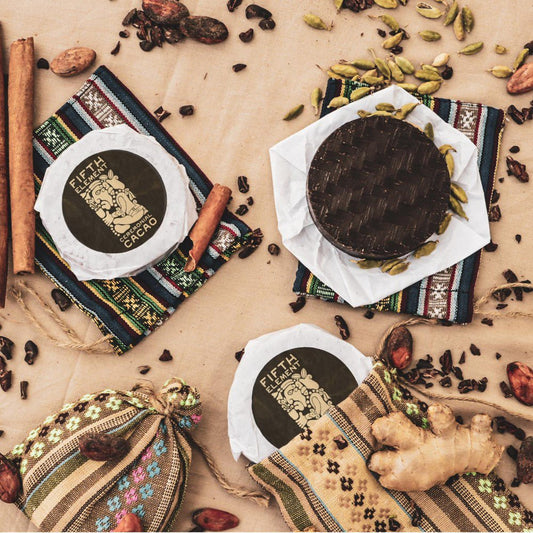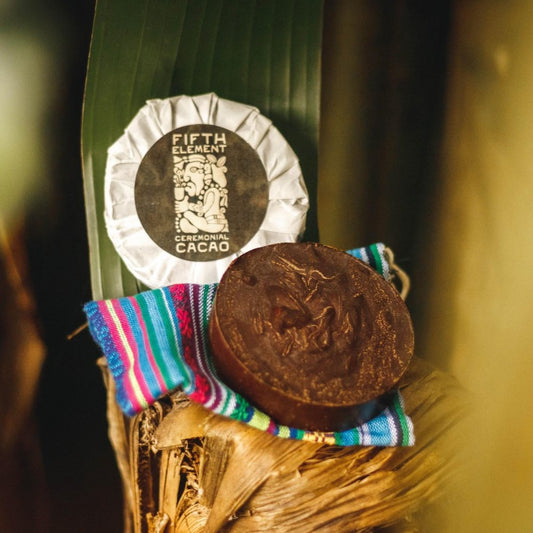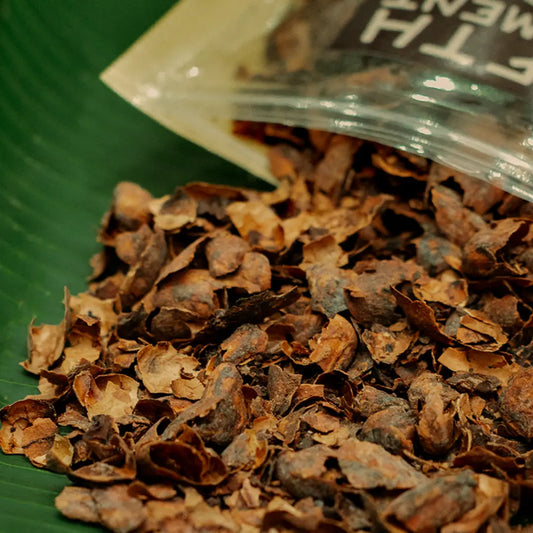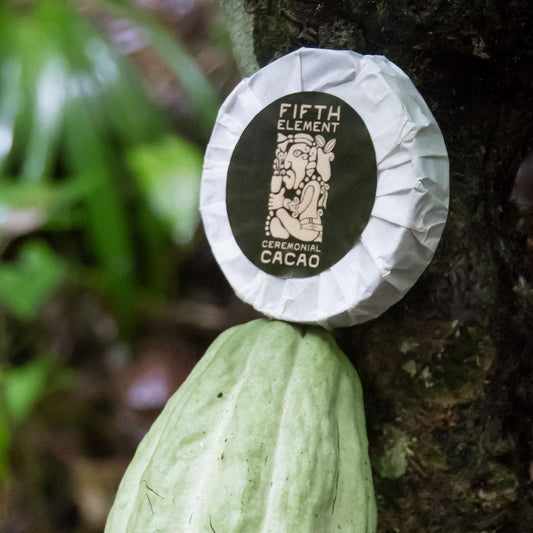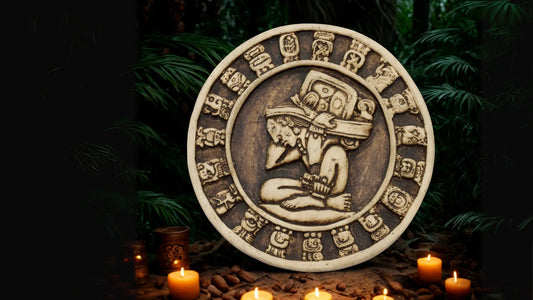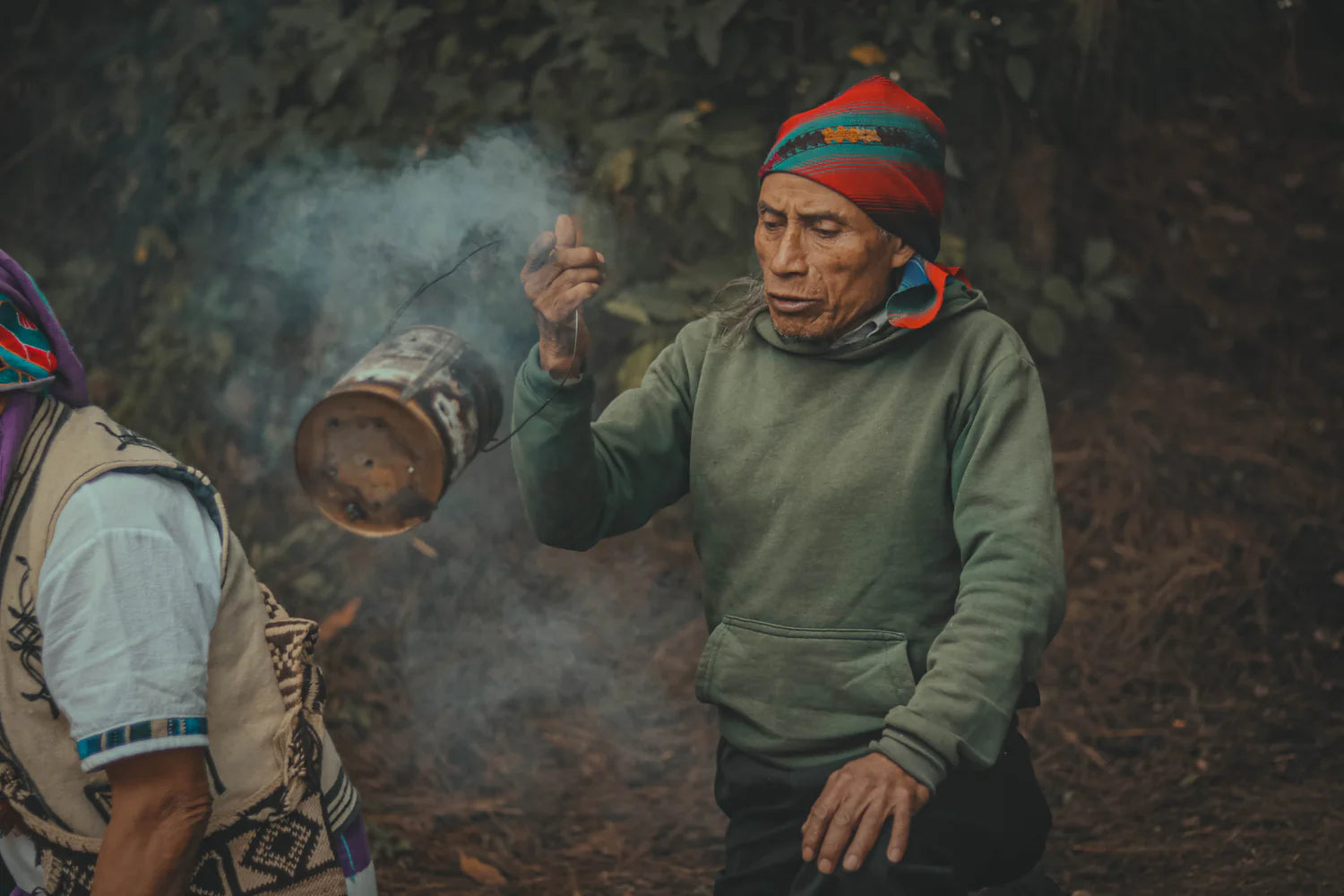
The Cacao Ceremony - Origin And Meaning
Welcome to our site dedicated to the fascinating world of the cacao ceremony - a practice as old as the civilizations that gave rise to it. These unique, spiritual practices, deeply rooted in the traditions of Mesoamerican cultures, are more than just a ritual - it is a journey through history and the soul.
The Origin of the Cacao Ceremony
The history of the cacao ceremony is rich and complex. It tells of the sacred rites of the Maya and Inca, of shamanic practices and of the spiritual power attributed to cacao. Today we are experiencing a renaissance of these ancient traditions, which are being revived in modern cacao rituals and spiritual practices .
In the following sections, we will explore the origin of the cacao ceremony, reveal its spiritual meaning, and look at the different cultural interpretations.
Join us on this heart-opening journey and discover how a cup of ceremonial cacao can nourish not only your palate, but also your body, mind and soul. If you would like to learn more about the wonderful effects ceremonial cacao has on your body, mind and soul, click here .
The history of cacao as an integral part of spiritual practices is as rich as the taste of the cacao bean itself. In ancient Mesoamerican cultures, cacao was revered as a sacred plant given to humans by the gods. The Maya and Aztecs used cacao not only for their healthy diet, but also in their rites and ceremonies to connect with divine forces.
Sacred potions: In ceremonial gatherings, shamans and priests prepared a sacred potion from the cacao beans. This was often refined with vanilla, chili and other spices and served during important rituals such as births, weddings or coronations. The potion symbolized wisdom, fertility and was a medium for meditation and inner contemplation.
Ceremonial offerings: Cacao was also used as an offering to the gods. The beans were considered a valuable commodity and were included in funeral rituals to accompany the deceased on their journey to the afterlife.
These ancient traditions and practices form the basis for the modern revival of the cacao ceremony, which is now valued as a tool for personal growth and healing in many cultures around the world. The ceremony is a bridge between the past and the present, teaching us how to use ancient knowledge to find new paths to self-development and community spirit.
Origin of the Cacao Ceremony: Early Records and Representations
The early records of the cacao ceremony are fascinating testaments to the importance that cacao had in ancient Mesoamerican cultures. These documents and artistic representations give us insight into the world of the Maya, Aztecs and other indigenous peoples for whom cacao was much more than a source of food.
Historical documents and codices In the codices of the Maya, such as the famous Dresden Codex, we find detailed descriptions of rituals and festivals in which cacao played a central role. These ancient manuscripts, often richly illustrated, show gods receiving cacao as an offering and priests preparing sacred potions.
Artistic representations Mayan and Aztec art, captured in steles, frescoes and ceramics, often depicts scenes of ceremonies and celebrations in which cacao is present. These representations are not only artistic masterpieces, but also historical documents that attest to the importance of cacao in social and religious contexts.
Influence on modern cacao ceremonies These early records and depictions are of interest not only to historians and archaeologists, but also to those who perform cacao ceremonies today. They provide inspiration and a deeper understanding of the rituals and help to build a bridge between the past and the present. The ancient traditions are thus seen in a new light and practiced with respect and awareness of their cultural heritage.
The history of the cacao ceremony is thus a living chapter that is told through these ancient records and representations. They allow us to appreciate the depth and complexity of these ancient practices and understand their significance in modern times.Discover real ceremonial cacao from Guatemala
-
Fifth Element Cacao: 100% Ceremonial Cacao - Tasting Set (3 x 114g)
Regular price $63.00 USDRegular priceUnit price / per -
Ceremonial Cacao - Fifth Element Cahabon (114g)
Regular price From $22.00 USDRegular priceUnit price / per -
Cacao Tea from real Ceremonial Cacao
Regular price From $22.00 USDRegular priceUnit price / per -
Ceremonial Cacao: Lanquin - 1/4 Pound (114g)
Regular price From $26.00 USDRegular priceUnit price / per
Traditions and myths surrounding ceremonial cacao
The mystical aura surrounding cacao is deeply rooted in the myths and traditions of ancient cultures. Cacao, often referred to as the “food of the gods”, was not only a precious commodity, but also a central element in the mythology of the Maya and Aztecs.
Mayan mythology:
In Mayan mythology, cacao was considered by the gods as a means of communicating with the sacred and an instrument for attaining wisdom. It is said that the god of cacao, Ek Chuah, gave cacao to humans to provide them with prosperity and protection. The Mayans believed that consuming cacao would provide them with divine energy and enhance their spiritual abilities.
Aztec legends:
The Aztecs revered cacao as a gift from Quetzalcoatl, the god of wisdom and life. Legend has it that Quetzalcoatl stole cacao from the gods and gave it to humans, which led to his downfall and exile. Despite this, cacao remained a symbol of generosity and sacrifice.
Modern cacao ceremonies:
These ancient stories live on in modern cacao ceremonies. They are often told at the beginning of the ceremony to connect participants with the deep spiritual meaning of cacao and to build a bridge between the past and the present. The ceremonies serve to remind participants of the sacred origins of cacao and take them on a transformative journey.
The lore and myths surrounding cacao are an essential part of the ceremony, as they not only convey historical significance but also enhance the spiritual dimension of the ritual, inviting participants to enter a world where the sacred can be found in the everyday and where every sip of cacao creates a connection to ancient wisdom.
Spiritual meaning of the cocoa ceremonies
The spiritual meaning of the cacao ceremony is deeply rooted in the traditions and beliefs of Mesoamerican cultures. Known as the “food of the gods,” cacao served as a bridge between the physical world and the spiritual, a sacred tool used in numerous rituals and ceremonies.
Connection between cocoa and spiritual practices
In spiritual practice, cacao acted as a catalyst for inner journeys and enlightenment. Mayan and Aztec shamans and spiritual leaders used the energetic properties of cacao to to open the heart and strengthen the connection to the divine. Participants in a cacao ceremony often reported profound insights and a heightened awareness achieved through the meditative and ritual consumption of cacao.
Ceremonial aspects and rituals
The rituals often included the communal drinking of ceremonial cacao, accompanied by chants, dance and prayers. These practices were designed to strengthen the community, promote healing and express gratitude to nature and the universe. The cacao ceremony was a moment of reflection that allowed participants to break away from old patterns and embark on new paths of self-development.
Today, the cacao ceremony is seen as a transformative experience that not only serves as a means of relaxation and enjoyment, but also as a path to personal and spiritual development. It offers a space for self-reflection, heart opening and the discovery of one's own intuition and creativity. By integrating mindfulness and intention, the cacao ceremony becomes a powerful tool for growth and change.
The actual cacao ceremonies
In the Mayan tradition, there is no “real cacao ceremony” in the traditional sense. Instead, cacao was used in various ceremonial occasions. The actual cacao ceremonies refer to the cocoa plants themselves. On indigenous farms, three ceremonies (Kotzij') take place in the life cycle of the cacao plants to show recognition and respect for the cacao trees and to bring positive energy into the plants:
- Planting ceremony: This takes place when the cacao is planted.
- Flowering ceremony: During the flowering period of the cacao plants.
- Harvest Ceremony: At the time of harvest.
These rituals are intended to strengthen the connection to nature and promote a harmonious relationship with plants.
Summary
The cacao ceremony is an ancient, spiritual practice with deep roots in Mesoamerican cultures, particularly the Maya and Aztecs. Cacao was considered a sacred plant gifted by the gods and played a central role in ritual and ceremonial acts. Shamans used cacao beans to prepare sacred potions that were often used on important occasions such as births, weddings and coronations, and cacao also served as a valuable offering to the gods.
Historical records and artistic representations in codices and on artifacts document the importance of cacao in the social and religious contexts of ancient cultures. These traditions also influence modern cacao ceremonies, which are seen as transformative experiences for personal growth and spiritual development.
In the Mayan tradition, there are specific ceremonies for the cacao plants to show respect to the plants during their life cycle. These rituals promote the connection to nature and bring positive energy to the plants. Overall, the cacao ceremony offers a deep connection to the history and spiritual roots of Mesoamerican cultures and is used worldwide today as a tool for healing and community spirit are valued.
Learn more about ceremonial cacao in our blog
View all-
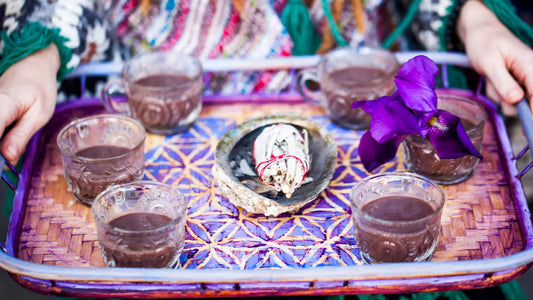
Frequently asked Questions about Ceremonial Cac...
Ceremonial cacao is growing in popularity – as a heart-opening drink, spiritual tool, and natural coffee alternative. In this FAQ, you'll find answers to the most common questions about its...
Frequently asked Questions about Ceremonial Cac...
Ceremonial cacao is growing in popularity – as a heart-opening drink, spiritual tool, and natural coffee alternative. In this FAQ, you'll find answers to the most common questions about its...
-
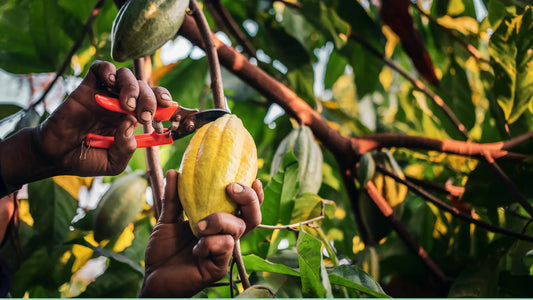
Ceremonial Cacao and Antidepressants: What You ...
Ceremonial cacao is increasingly used as a natural support for emotional well-being. It contains bioactive compounds that can enhance happiness and reduce stress. But what if you are taking antidepressants?...
Ceremonial Cacao and Antidepressants: What You ...
Ceremonial cacao is increasingly used as a natural support for emotional well-being. It contains bioactive compounds that can enhance happiness and reduce stress. But what if you are taking antidepressants?...

